Valances
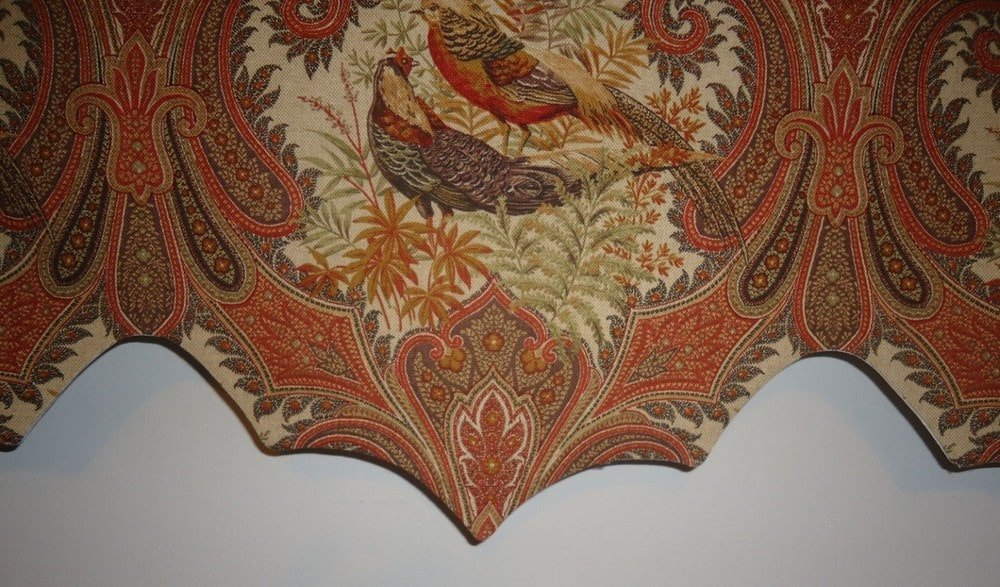
Window Top Treatment Terminology
Valances are a form of window treatment that covers the uppermost part of the window and are sometimes used to conceal existing drapery hardware. Valances are often paired with blinds and drapes or it can be used alone. They can offer that simpler touch that goes well with contemporary and transitional rooms. Window treatment terminology is tricky. If you have ever felt confused about the difference between a cornice and a valance, you are not alone. Both valances and cornices top off your window to add a decorative touch, but there is a distinct difference between the two. Sometimes lumped together and used interchangeably however, after today you will be able to clearly determine the difference between these two confusing window types.
A valance always has a soft appearance that can look casual or formal depending on which style you prefer. With fabric hanging freely at the top of the window, valances instantly create interest when used alone or paired with other window treatments. Valances are used to add a purely decorative look. Whether you prefer the more structured look of a cornice or you like the soft feel of a valance, top treatments can really change the look of your room.
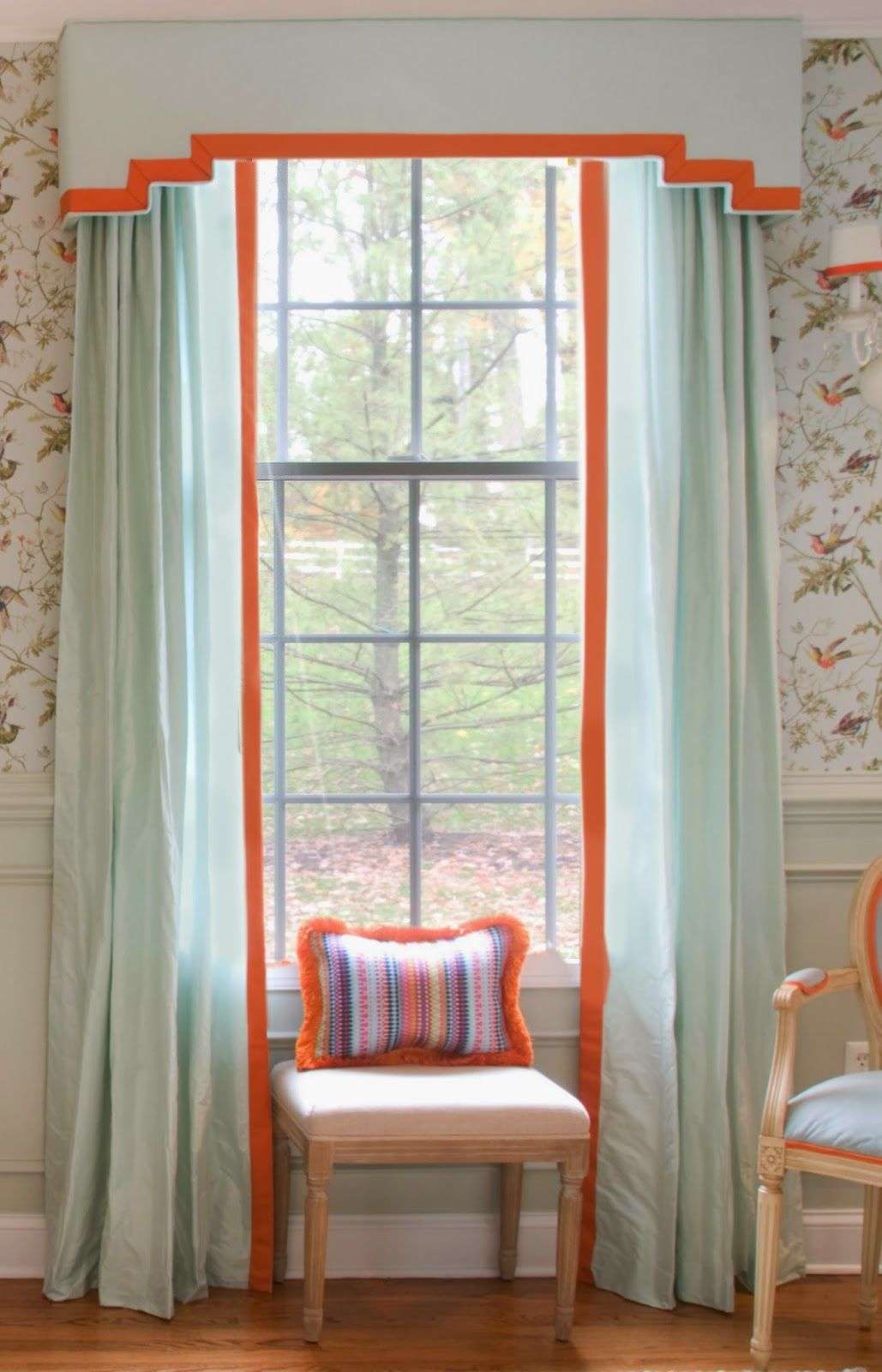
Pattern match fabric to the shape of cornice
A cornice is similar to a valance in the same sense that they both top off your window either alone or added to the top of your draperies. What makes a cornice different from a valance is how it is constructed. Cornices are hard top treatments that use fabric to cover a board with no loose fabric hanging at the bottom. You can request a variety of shapes and patterns for a cornice that sometimes cannot be created with a valance. What is nice about a cornice is that you can make the shape follow the fabric as done in the above picture.
You can match the detail on the cornice to the drapey to get a stunning look with a solid fabric and banding. This allows artwork and other accessories to not compete with the window treatment.
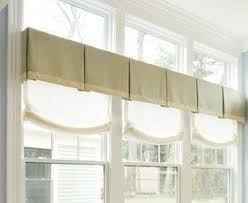
Box pleated valance with banding or tape along the bottom is one of the most popular valances of 2020. It can be box pleated like the above photo or tailored like the photo below. The trend is to use a solid drapery fabric and add tape trim down the leading edge of the drapery and across the bottom of the valance. This creates a clean transitional look.
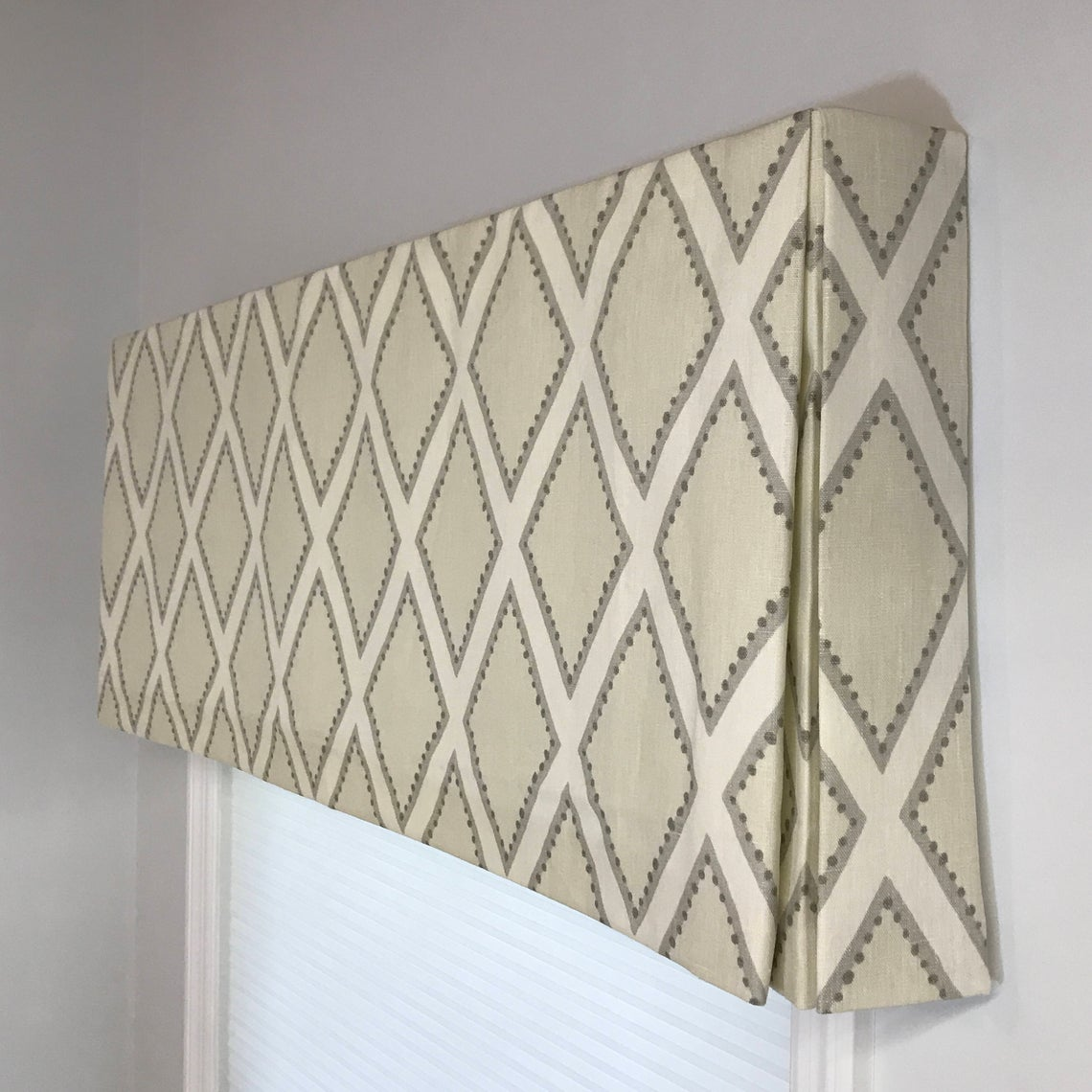
An added plus to this valance is that it really showcases the pattern of your fabric. You need to scale the length of the valance to the width of the window. If you decide to take the valance longer than the width of the window it can create what I like to call a “top hat effect” If you are needing to make your window look taller you can always add a roman shade under the valance and this will allow you to “fake” the dead space above your window. This really helps make a room look taller.
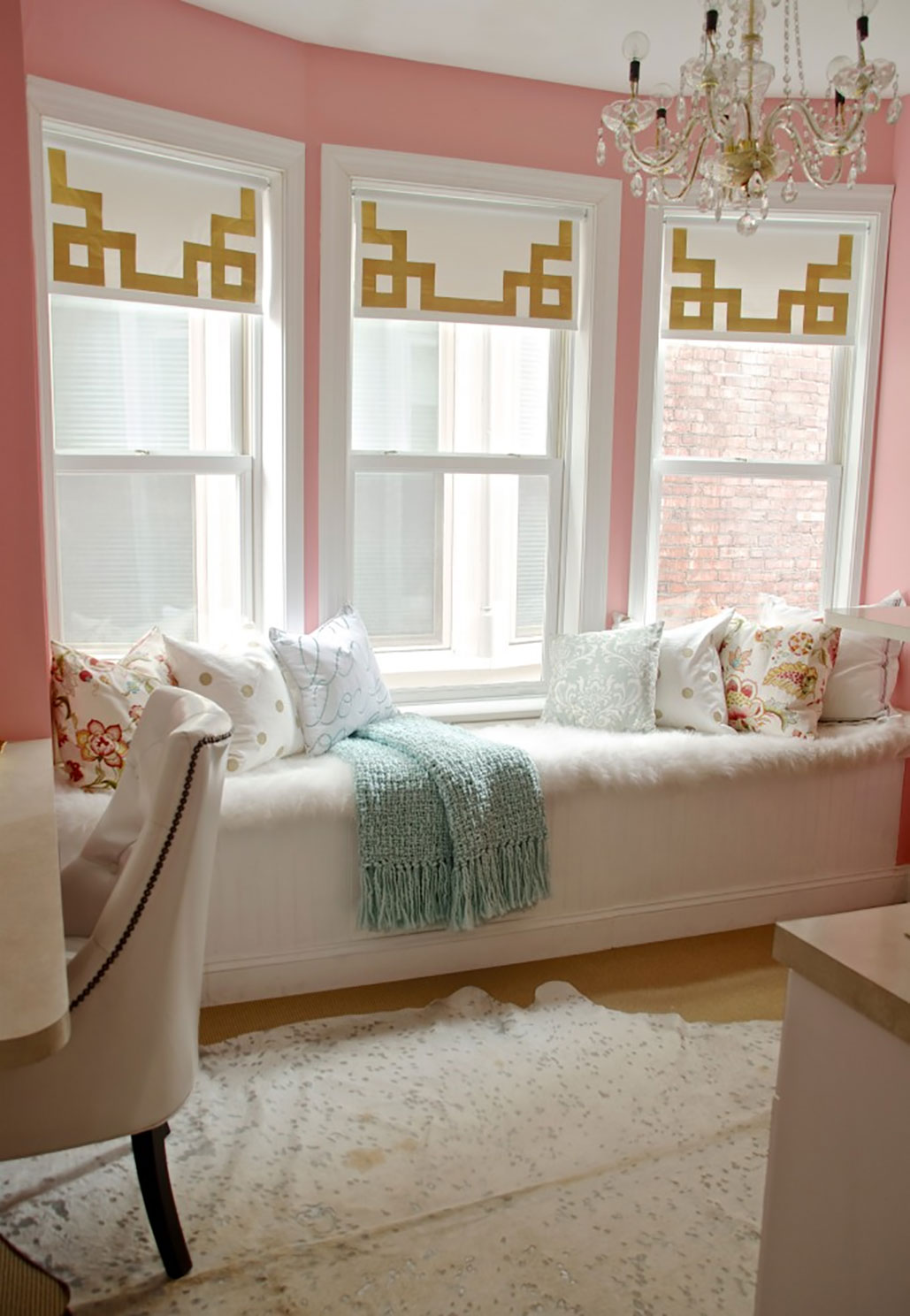
Faux Roman shades make a great choice for valances. Here you have a set of three windows *and a valance with an inside mount. The white fabric with the gold patterned tape sets these windows off in a clean and crispy way.
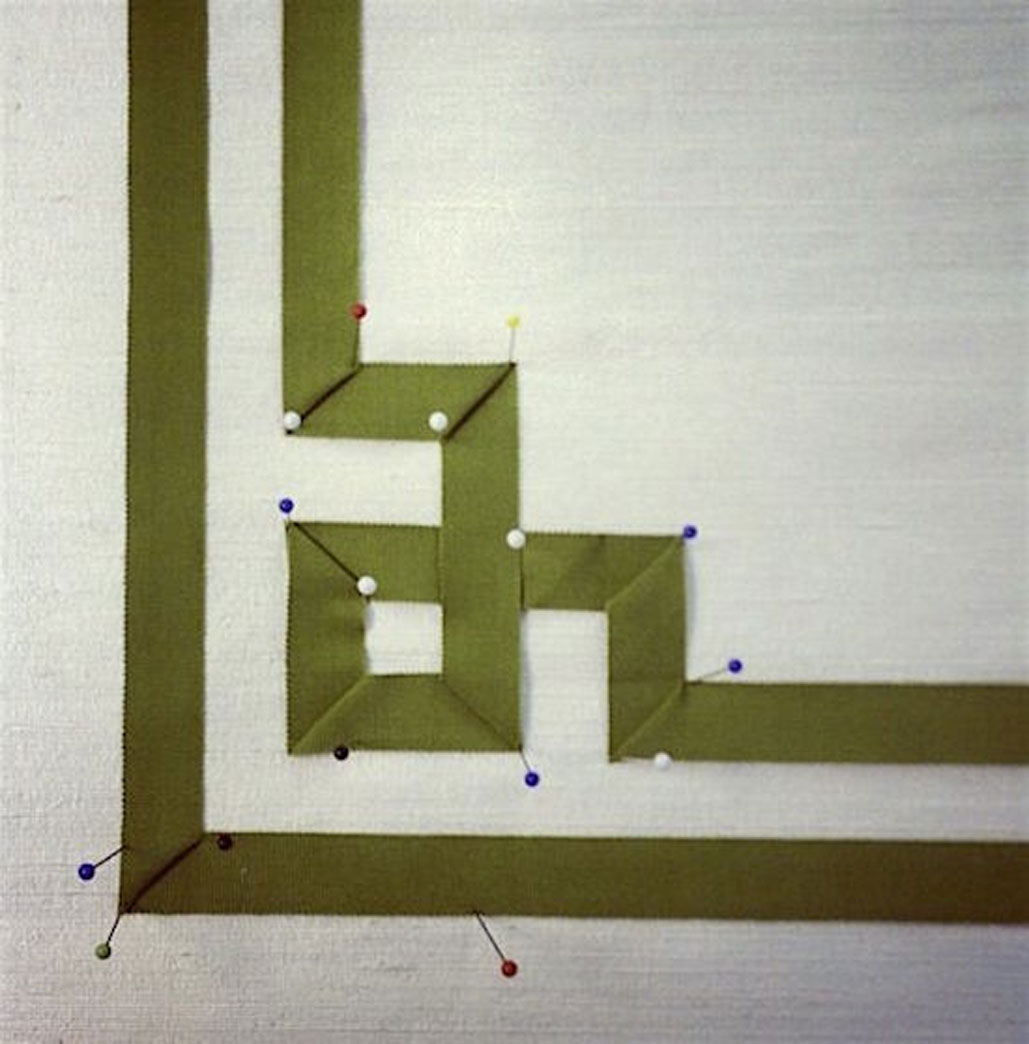
This is a very time-consuming process but worth it for the end results. It is imperative that a tape trim is selected that is easily folded and does not create a lot of bulk. Specifying how far you want the tape from the edge and the other dimensions to create this look is something I can help you with. This can be rather daunting if you have not specified this detail before.
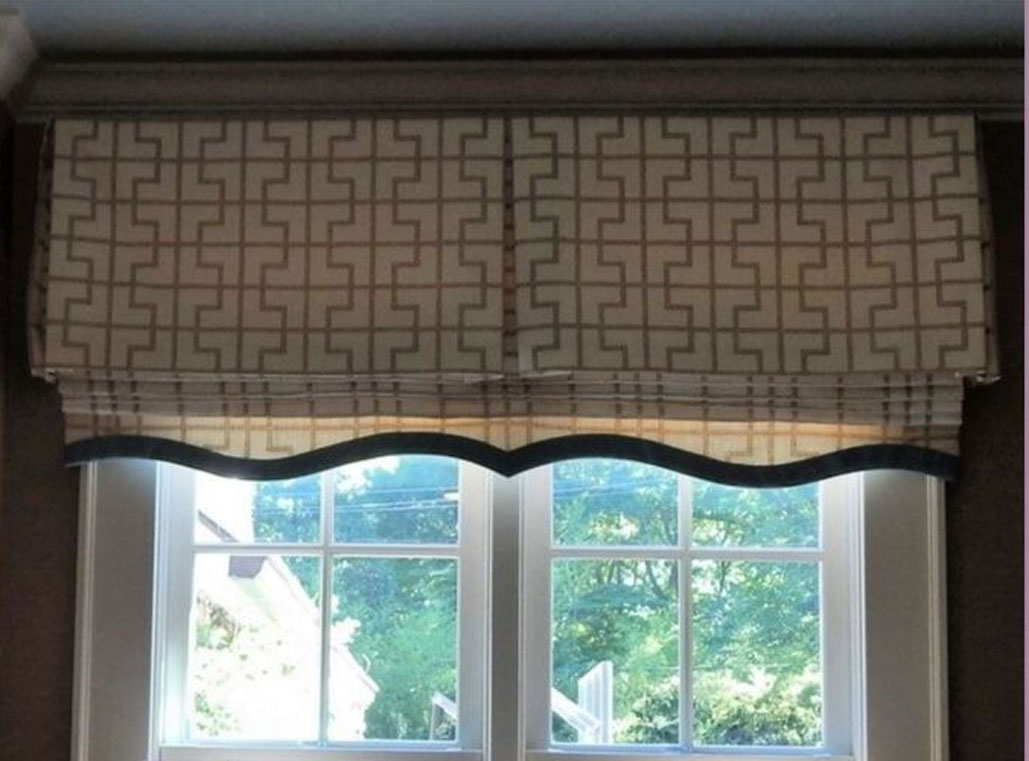
There are all sorts of details that can be added to either the valance or the shade *that is being topped off. You may want to save the “details” for the roman shade which will hang below your valance.

Brighton Balloon Shades make nice top treatments. I don’t particularly like them for privacy as they need some special attention each time they are raised back up. Brighton shades typically have one drop and what I call “wings” on each side. They are pleated and you can add the button touch if you so desire.

Another type of valances are swags. This used to be a very popular window treatment style but has taken a back seat to tailored and faux roman shade valances. But just as with everything I am sure they will be back. Swags are sometimes called festoons. The word festoon originated from the Latin word Festo and was used to describe a wreath or garland hanging from two points. When depicting fabric or linen the motif became known as a swag, as to hang in a drooping curve. A swag is usually used with a pair of cascades at either end. This frames a window nicely as a valance or can be paired with draperies. Swags began to take a back seat with the popularity of exposed hardware. Things have become less fussy and formal and are rather streamlined. If you want a truly formal look the swag is the way to go. Even though it may be a while before swags are popular we still, on occasion, make them, and understanding the terminology is something every designer should be familiar with.
This is only a fraction of all the choices there are for window top treatments. Once you decide the look you want for the windows in need of dressing, then comes the fun part, making all the decisions to be able to specify the treatment to fit the window. There are lots of things to consider and Serendipity Designs would love to help you work out all those details to create the perfect top treatment for your project.





